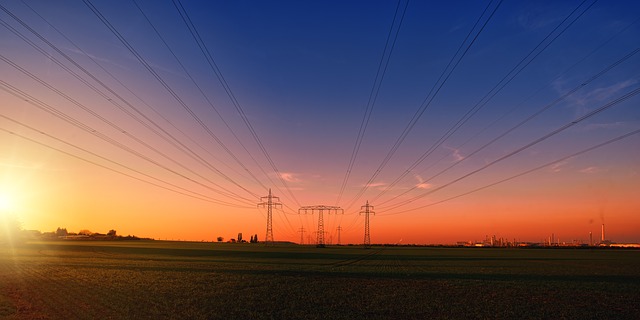Power generation
The term 'power generation' describes the process of generating electrical power. Types of power generation include:
- Fossil fuel thermal energy such as coal or natural gas.
- Biogas energy.
- Geothermal energy.
- Hydroelectricity.
- Wind energy.
- Solar thermal energy.
- Tidal energy.
- Photovoltaics.
- Nuclear energy.
- Chemical energy generated from fuel cells, batteries, and so on.
Power stations are normally located away from centres of population where fossil fuels are abundant or good transport links exist. Many of these locations are well away from the towns and cities where the electricity is used and hence there is a need for electricity transmission and distribution.
The national power supply network is managed by four types of organisation:
- Generators - responsible for producing the electricity.
- Suppliers - responsible for supply and selling electricity to consumers.
- Transmission network - responsible for the transmission of electricity across the country.
- Distributors - those who own and operate the local distribution network from the national transmission network to homes and businesses.
Microgeneration is the local production of power on a very small scale in comparison to the typical output of a power station.
Consumers can qualify for an ‘export tariff’ by selling surplus electricity back to their supplier. Allowable technologies are:
- Solar photovoltaic panels.
- Wind turbines.
- Water turbines.
- Anaerobic digestion (biogas energy).
- Micro combined heat and power (micro-CHP).
NB Net Zero by 2050, A Roadmap for the Global Energy Sector, published by the International Energy Agency in May 2021, suggests that power generation: ‘Refers to fuel use in electricity plants, heat plants and combined heat and power (CHP) plants. Both main activity producer plants and small plants that produce fuel for their own use (auto-producers) are included.’
[edit] Related articles on Designing Buildings
- Arcing.
- Building an electrical grid for our times.
- Dispatchable generation.
- Electricity supply.
- Energy consumption.
- Energy storage.
- Engineering Recommendation G99.
- Fossil fuel.
- Hydroelectricity.
- Micro-grids.
- Microgeneration.
- Oil - a global perspective.
- Power.
- Renewable energy.
- Smart Export Guarantee SEG.
- Solar photovoltaics.
- Substation.
- The future of UK power generation.
- Types of fuel.
- Using P-DfMA to decarbonise coal-fired power stations.
- Watt.
Featured articles and news
Delivering for tenants; National Retrofit Hub
New report offers recommendations to strengthen energy efficiency standards to protect private renters.
Government consultations for the summer of 2025
A year of Labour, past and present consultations on the environment, the built environment, training and tax.
CMA competitiveness probe of major housing developers
100 million affordable housing contributions committed with further consultation published.
Homes England supports Greencore Homes
42 new build affordable sustainable homes in Oxfordshire.
Zero carbon social housing: unlocking brownfield potential
Seven ZEDpod strategies for brownfield housing success.
CIOB report; a blueprint for SDGs and the built environment
Pairing the Sustainable Development Goals with projects.
Types, tests, standards and fires relating to external cladding
Brief descriptions with an extensive list of fires for review.
Latest Build UK Building Safety Regime explainer published
Key elements in one short, now updated document.
UKGBC launch the UK Climate Resilience Roadmap
First guidance of its kind on direct climate impacts for the built environment and how it can adapt.
CLC Health, Safety and Wellbeing Strategy 2025
Launched by the Minister for Industry to look at fatalities on site, improving mental health and other issues.
One of the most impressive Victorian architects. Book review.
Common Assessment Standard now with building safety
New CAS update now includes mandatory building safety questions.
RTPI leader to become new CIOB Chief Executive Officer
Dr Victoria Hills MRTPI, FICE to take over after Caroline Gumble’s departure.
Social and affordable housing, a long term plan for delivery
The “Delivering a Decade of Renewal for Social and Affordable Housing” strategy sets out future path.
A change to adoptive architecture
Effects of global weather warming on architectural detailing, material choice and human interaction.
The proposed publicly owned and backed subsidiary of Homes England, to facilitate new homes.
How big is the problem and what can we do to mitigate the effects?
Overheating guidance and tools for building designers
A number of cool guides to help with the heat.
The UK's Modern Industrial Strategy: A 10 year plan
Previous consultation criticism, current key elements and general support with some persisting reservations.
Building Safety Regulator reforms
New roles, new staff and a new fast track service pave the way for a single construction regulator.


























